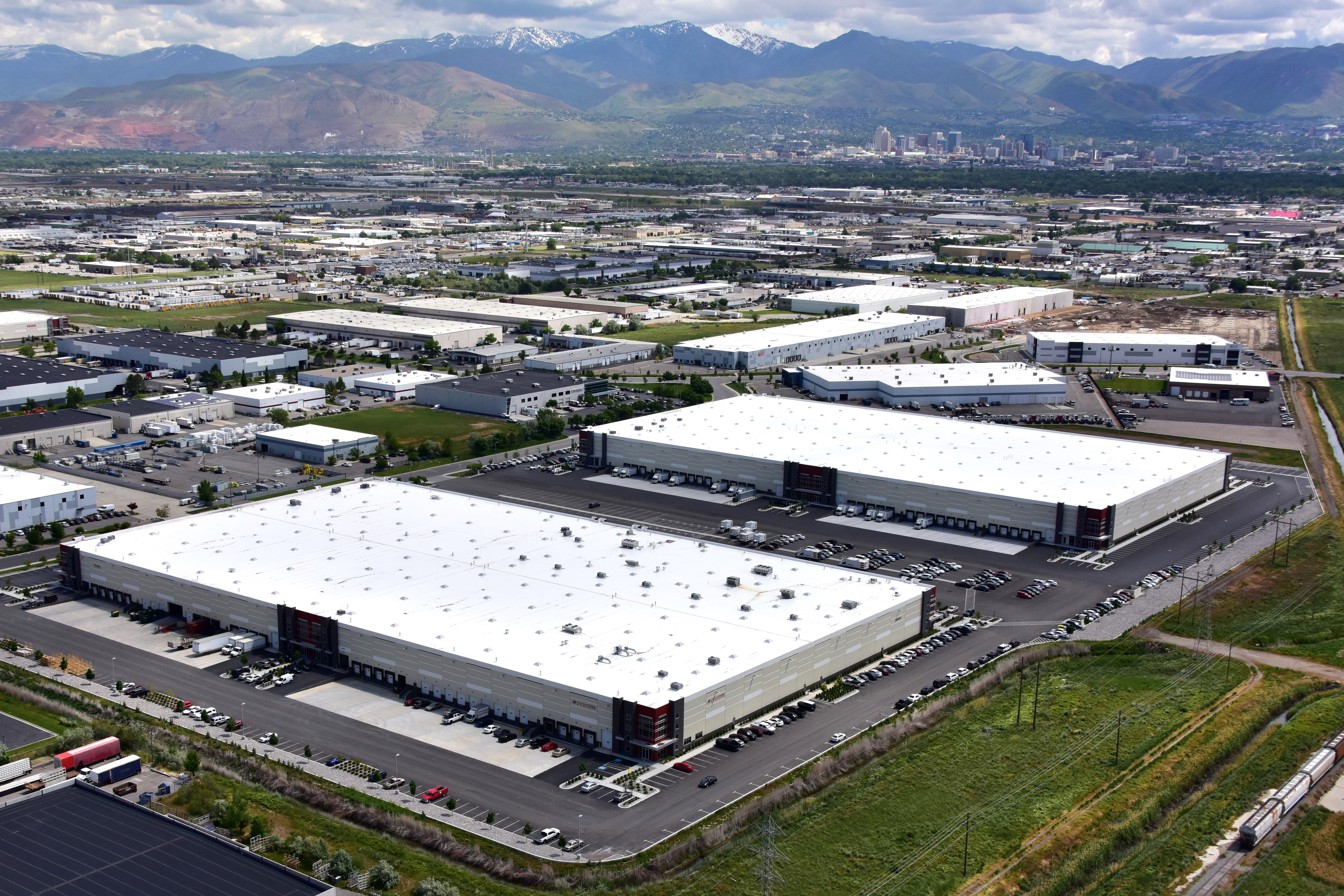CBRS – A Gift from the FCC: Five Questions for Eric Toenjes of Graybar

June 8, 2021
Network World describes CBRS, also known as Private LTE, in the following way:
“Private LTE is a local cellular network that includes cell sites and core network servers dedicated to supporting the connectivity of a specific organization’s requirements independent of the cellular networks of service providers…Private LTE is also suitable for some distributed-enterprise use cases, including stadiums, airports, amusement parks, ports, railroads, mines, oil/gas extraction, warehouses, factories, agriculture, elements of smart cities and public safety. Other applications for private LTE involve extremely remote areas with poor cellular coverage.”
To find out more, we spoke to Eric Toenjes, National market manager – Wireless solutions, of Graybar, a Fortune 500 company that is an EDCUtah investor.
To put CBRS in context, can you talk about the radio spectrum?
First of all, think about your major incumbent cell carriers. They are using what’s called a licensed part of the spectrum. Nobody else can utilize that specific range purchased by and set aside for telecom services.
Then think about Wi-Fi. When you go to library or a coffee shop, the Wi-Fi services are using an unlicensed part of the spectrum. All those different hot spots are competing for the same range, which is free and convenient, but that accessibility can create throughput and security issues.
CBRS uses a part of the spectrum that’s described as “lightly licensed.” Originally the Federal Communications Commission reserved all of the CBRS range for the U.S. Navy and its radar operations. The Navy doesn’t need all of the range, so last summer, the FCC created some levels of priority within the spectrum and sold some of it off in an auction.
What remains is called General Authorized Access and it’s managed by what’s called a Spectrum Allocation System or SAS. When a general user – for example, a stadium or a school campus -- requests access, SAS grants uninterrupted use in a given geography for a given time period. There are no competing demands as you have with unlicensed Wi-Fi. CBRS in effect avoids the free-for-all and has higher security than Wi-Fi. I call it a gift from the FCC to the American people.
CBRS and Private LTE are essentially the same. LTE stands for “Long Term Evolution” and that does bring to mind 4G and 5G. CBRS is currently utilizing 4G technology but it is already evolving to 5G, just like the telecom carriers.
What are some of the security features of CBRS?
When it comes to the public and private sectors, there are concerns about tech terrorism and cyber security. There’s a greater desire for control over access and how you grow your system over time.
Your smartphone from your cellular provider has a SIM chip that is, in effect, your device identity. The SIM card allows for device level authentication on the telecom carrier’s network. Until the network operator authenticates the SIM card in your device, you may be able to see a signal but you cannot access the network. That’s a big advantage of carrier service vs. Wi-Fi, which only requires a network ID and a password.
Wi-Fi has good aspects too. For example, Wi-Fi allows your data to stay local while the cellular network passes your data back-and-forth with the network operator. Wi-Fi also offers control over the network since the enterprise deploys all network elements when and where they are needed with the required capacity and back-up power. In contrast, cellular services are provided by the carrier where and how they decide, and the carrier makes upgrades to technology and redundancy/capacity on their schedule. Ultimately the main network elements are outside of an enterprise’s control.
A CBRS network combines the best of both worlds – security, control, and scalability. For one thing, with a CBRS network, a SIM chip is also used so that you can enforce a carrier-like level of enterprise security.
While cloud-based network core services are available, if you purchase a CBRS network core, known as an EPC, deployed on your premise then your data stays local just like Wi-Fi. You can add your own back-up power to the network elements, scale the capacity to meet your needs, put the coverage where you need it and make technology upgrades such as moving from 4G LTE to 5G on your timetable all while getting the security of authenticated SIM chips.
What kind of equipment does a city or organization need to set up a CBRS network?
The biggest investment is in the form of cell towers and servers, or in the case of a single building, cell equipment that works in an indoor setting. Basically, you need enough cell transmission gear to cover the footprint of the city or the manufacturing plant, office building, hospital, arena, or school campus.
Once the cell transmission equipment is tuned to the CBRS spectrum and can make requests to SAS, a computer, phone, IoT, or other mobile device can access the private network for voice or data usage, just as you can with a licensed carrier device.
With local government weighing infrastructure investments, and private organizations looking at ways to increase productivity and security, what are some applications for CBRS?
On a CBRS or Private LTE implementation, you can use voice, data, two-way radio, and IoT devices. Some cities are looking to use it for Smart City backbones, with parking sensors as an example. But there are plenty of other uses.
One thing that became acutely apparent in the pandemic was the digital divide. In education we saw a widening homework gap. Kids in some households were unable to do research or turn in assignments. Improving digital access is one facet of helping more students succeed.
We’re in a permanent market change, not a temporary one. By the time our kids go back to school in August, there will still be a long-term need for connectivity beyond the four walls of the school.
With libraries closed during the pandemic, it made it harder for some out of work citizens to apply for job openings or take part in online job interviews. It also hampered the distribution of information on vaccines and other health guidance. Again CBRS can improve overall access for residents of a city or county.
CBRS can also help improve access to telehealth, a service that really took off during the pandemic. Doctors learned that they can interact with more patients on a daily basis.
Rural areas often have limited internet options. An investment in CBRS can be a cost-effective approach to delivering higher-speed internet access in areas where laying fiber doesn’t pencil out. Getting copper or fiber laid down over that “last mile” can be expensive. CBRS can work in a blended system. Take that cable and run it down your main right of way access, then utilize wireless for the last mile. Lightly licensed spectrum can be an advancement in rural communities.
In the private sector, I think commercial real estate developers should find CBRS of interest. Enhancing your office or industrial space with CBRS could be part of making that property more competitive. Consider using a CBRS network for your business or mission critical voice and IoT applications where wireless is needed. The security and control it offers makes those applications much more reliable, safe and private.
In general terms, how much does a CBRS network cost?
Similar to the way in which you cost out a Wi-Fi network, it depends on the capacity needed and the density of users. The bigger the area you need to cover the more points of transmission needed and infrastructure to support it. More capacity means separate sectors at each transmission point, which multiplies your electronics. For outdoor network deployments it depends on the density of population to be served. Rural implementations do cost more per resident than urban implementations since you need to cover a larger area with fewer people.
I like to point out that, during the pandemic, a number of schools tried rolling out mobile hotspots on carrier networks. They found that approach cost anywhere from $25 to $40 per student a month. That’s $480,000 a year to serve a thousand students. A comparable CBRS installation could be $10 to $25 a month in an urban environment and probably in the $40 per student in a rural setting, where other options might be limited.
Federal stimulus funds could be a good means to pay the initial capital costs of cell towers and other equipment for public sector customers.
For more information about Graybar, contact Carter Rains, business development manager, at carter.rains@graybar.com.






